
- •Atmospheric turbulence
- •Small speed of motion. Particles move parallel each other. Laminar motion.
- •Laminar and turbulent flow of cigarette smoke
- •Theoretical and experimental studies have shown that the character of liquid (gas) motion
- •Turbulent motion of air results in disordered and rapid fluctuation of meteorological parameters.
- •Eddy mole and mixing length
- •When moving, the eddy moles transfer admixture and some physical properties of the
- •Surface layer
- ••Planetary boundary layer – k is close to 0 (few km)
- •The surface layer is the layer in a fluid where the scale of
- •Eddy exchange in horizontal directions
- ••Semi empirical turbulent theory or “k” theory is a theory based on eddy
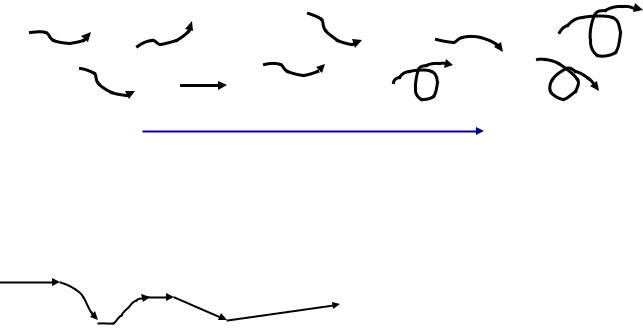
Atmospheric turbulence
The atmosphere is known to be in nonstop motion. Individual particles move randomly follow chaotic trajectories.
However, basically the particles move in a certain direction. This regime of motion is called turbulent regime of motion.
At this regime, the motion velocity pulsates. A moving particle
sharply changes its velocity.
Turbulent motion makes a remarkable impact on the
state of the atmosphere and the physical processes in it.
Lecture 11. Atm. turbulenc |
1 |
e |
|
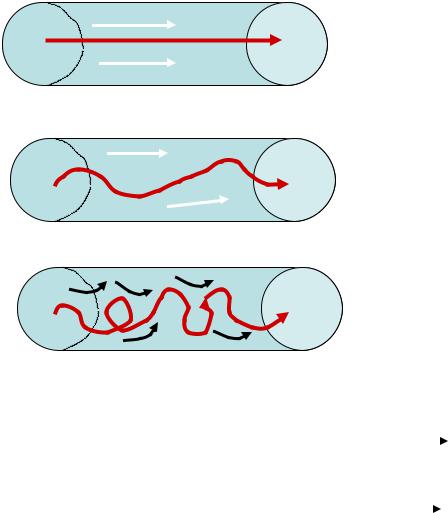
Small speed of motion. Particles move parallel each other. Laminar motion.
Speed of the ink particle are faster than the speed of general motion. The ink jet starts meandering.
Fast motion. Trajectories of the
motion distorted. That is turbulent
motion.
Small vortexes produced by the turbulence are known as EDDIES.
Water-pipe tap is opened just slightly |
|
|
A small water jet is smooth |
|
|
|
|||
(laminar motion). |
|
|
|
|
Water pipe tap is opened widely |
|
|
|
The water jet is rough |
|
|
|
||
(Turbulent or eddy motion) |
|
|
|
|
Lecture 11. Atm. turbulenc |
2 |
e |
|
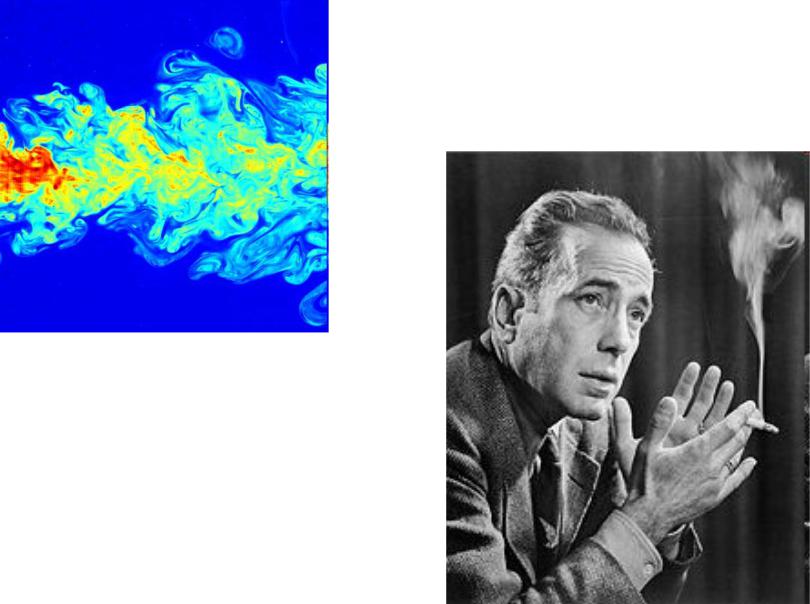
Laminar and turbulent flow of cigarette smoke
•For pipe flow, a Reynolds number above about 4000 will most likely correspond to turbulent flow,
•while a Reynold's number below 2100 indicates laminar flow.
•The region in between (2100 < Re < 4000) is called the transition region.
Lecture 11. Atm. turbulenc |
3 |
e |
|

Theoretical and experimental studies have shown that the character of liquid (gas) motion is suggested by Reynolds Number.
Speed of motion
|
|
|
|
|
Distinctive (typical) scale of motion |
Re |
c l |
|
|
||
|
|
|
|||
|
|||||
|
|
|
|
||
Density of the liquid |
|
Dynamic coefficient |
(gas) |
|
of molecular viscosity |
Critical value of the number Re is different for different substances and conditions. As the number of Re reaches its critical value, the motion is transferred into turbulent character.
In case ρ and η are constant (that is true for a certain medium), the number Re depends on the speed and distinctive scale of motion.
Calculation Re numbers for the atmosphere suggested that the
motion in the atmosphere are always turbulent.
Along with Re number there are some others criteria for character of motion and intensity of the eddy development.
Lecture 11. Atm. turbulenc |
4 |
e |
|

Turbulent motion of air results in disordered and rapid fluctuation of meteorological parameters. However, along with chaotic motion, all air particles are subjects to move with a mean speed. Therefore,
momentary speed of motion c* can be presented as:
c* c c' or |
c* c c' |
|||
|
|
|
|
|
Mean speed |
|
Pulsation |
|
|
Notion of admixture specific content
|
|
|
Mass of water vapor |
|
|
|
|
|
|
|
|
||
|
|
|
Mass of ozone |
Mass of a substance in a unit |
||
|
|
|
|
or air mass is called |
||
|
|
|
Mass of CO2 |
|
||
|
|
|
|
ADMIXTURE SPECIFIC |
||
|
|
|
|
|||
|
|
|
|
|
||
|
|
|
Mass of solid and |
|
CONTENT (ASC) |
|
|
|
|
liquid aerosols |
|
|
|
|
|
|
|
|
||
|
A unit of air mass |
For instance, the water vapor content is known as |
||||
ASC vary in a wide range |
||||||
specific humidity (s), or fraction of water vapor. |
||||||
both in horizontal and |
|
|
|
|||
|
vertical directions |
Lecture 11. Atm. turbulenc |
5 |
|||
e

Eddy mole and mixing length
A separate particle taking part in eddy mixing is called
EDDY (TURBULENT) MOLE.
 Mean flow
Mean flow
The heaven is infinity in time and
space!
Any man is an insignificant particle in this infinity and boundlessness. What is the symbol of the infinity and boundlessness on the Earth? Certainly, it is the heaven! Any one appears from the infinity and goes into the infinity after his life is over, like an eddy mole, being formed in an atmospheric current, after a while mixes into the current and disappears there forever! (prof. G.G.Tarakanov)
Lecture 11. Atm. turbulenc |
6 |
e |
|
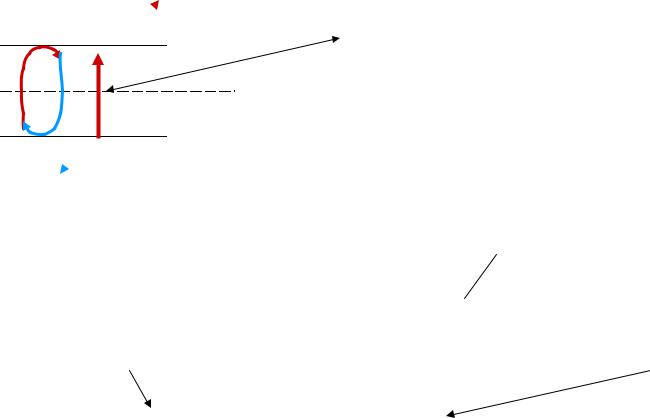
When moving, the eddy moles transfer admixture and some physical properties of the air such as heat, moisture, and momentum. The most remarkable mixing takes place in vertical direction.
Usually ASC decreases with height (∆s<0), but in some rare cases, it can be opposite (∆s>0). Eddy mixing results in equalization of ASC.
s+∆s  Z+∆Z
Z+∆Z
Zi
 s Z
s Z
The mass of admixture transferred by the eddy mixing for a unit of time through a unit
of the surface at the altitude Zi is called FLUX OF ADMIXTURE (Q).
It is obvious that the eddy flux must be proportional to the difference of ASC at the level Z and ∆Z related to a unit of the distance between those levels, i. e. s Z
Q A |
s |
|
|
Q lim |
A |
s |
A |
s |
|
Z |
|
Z |
Z |
||||||
|
|
Z 0 |
|
|
|||||
Coefficient of eddy exchange (mixing coefficient)
Lecture 11. Atm. turbulenc 7 e
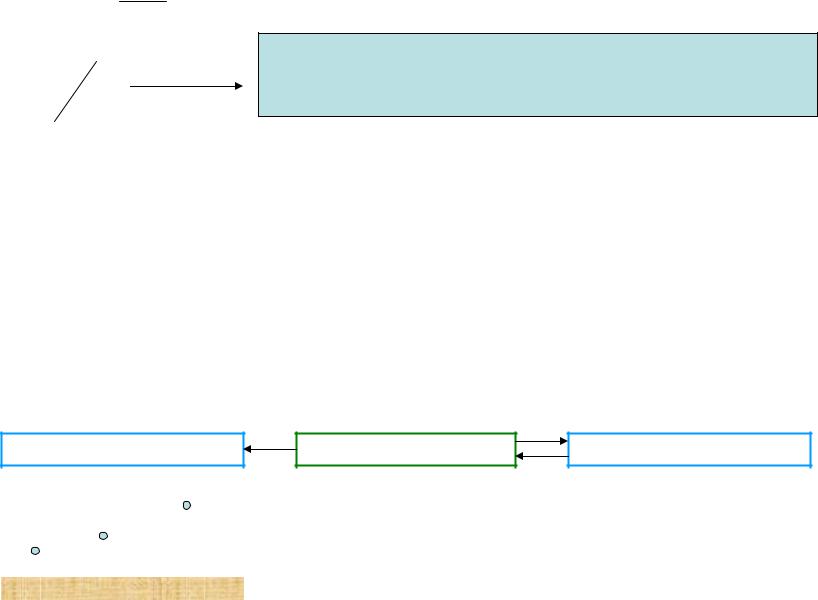
s m 1; A kg s 1 m 1
Z
K A
Coefficients A and K are not constants. Their value depend on: wind velocity and its variation, static stability, properties of the underlying surface, etc
Postulate of eddy exchange
During an interval of time, the amount of transferred substances through a surface upward and downward must be equal.
A and K values |
Wind pulsation |
Mixing length, L |
|
|
|
|
|
|
A |
0 |
|
K |
0 |
|
|
|
|
|
|
|||||||
L1 |
|
L2 |
|
L3 |
|
Z |
|
|
Z |
|
|
|
|
|
|
|
|||||||
|
|
|
|
||||||||
|
|
|
|
|
Lecture 11. Atm. turbulenc |
8 |
|||||
|
|
|
|
|
|||||||
e
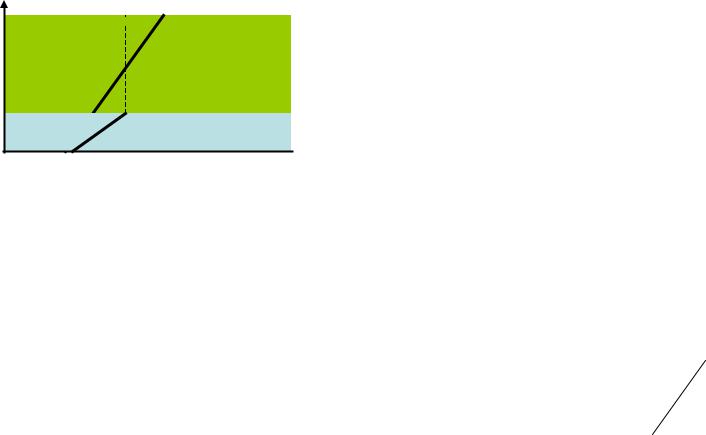
Surface layer
The layer of the atmosphere, where eddy coefficient increases with height is called SURFACE LAYER
Z |
|
250 m |
20 m
 K
K
The most frequently S. L. height is 50 – 100 m
K values vary from 10 1 to 101
There are also molecular fluxes of various substances
D is molecular |
|
Q D |
s |
|
T 00 C D 0,198 10 4 |
||||
|
|
||||||||
|
m |
Z |
|
|
|
|
|
||
diffusion coefficient |
|
|
T 200 C D 0,283 10 4 |
||||||
|
|
|
|
||||||
|
|
|
|
|
|||||
|
|
|
|
|
|
|
|
Q Q |
105 |
We may neglect molecular fluxes |
|
D K |
|||||||
|
Lecture 11. Atm. turbulenc |
|
m |
9 |
|||||
e
•Planetary boundary layer – k is close to 0 (few km)
•Surface layer – k increases (decimals – hundreds of m)
•Subsurface layer – laminar motion ( close to Earth surface, 2 mm)
Lecture 11. Atm. turbulenc |
10 |
e |
|
